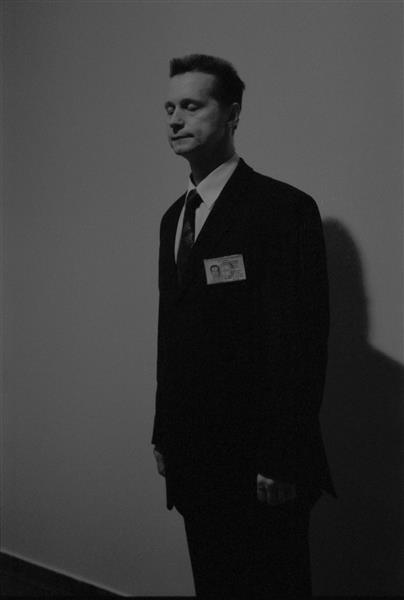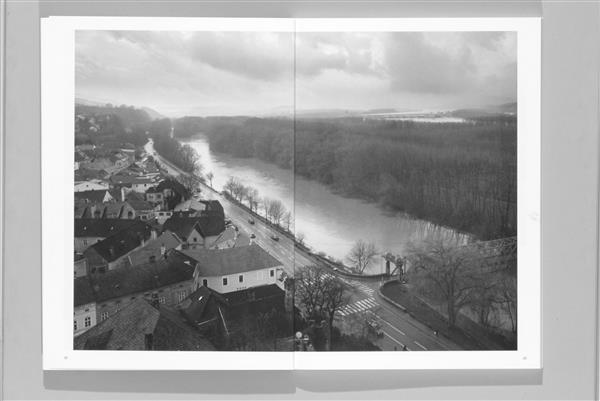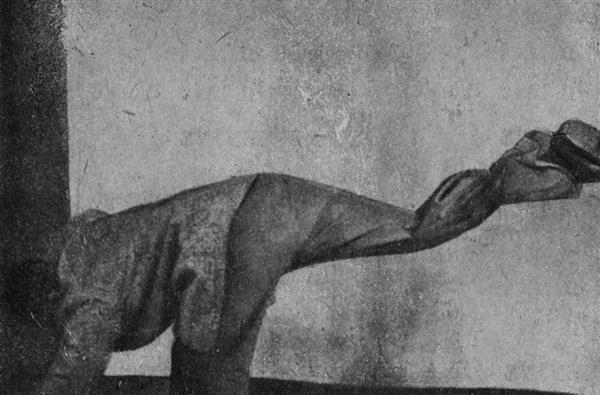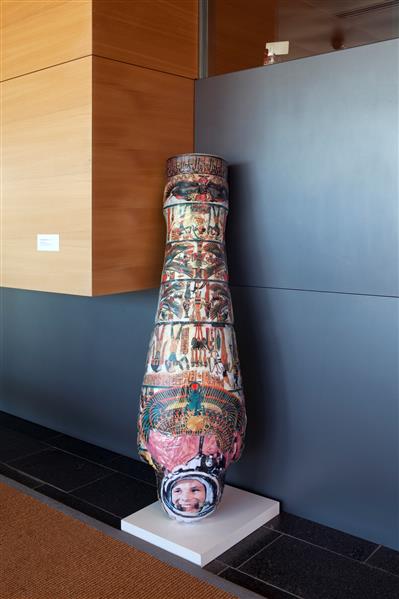Guard #8
Olga Chernysheva
silver gelatine fiber print
edition 2/3 + 2 AP
157 × 107.5 cm (framed)
2009
Acquisition 2010
Inv. No. 0206
Time and again, Olga Chernysheva deals with the social disparities in post-communist Russia, employing a wide spectrum of artistic media.1 However, in her sensitive research she concentrates neither on images of obscene wealth nor on those of total misery: “I don’t let myself in for such extremes. They cannot be overlooked anyway and speak for themselves. I for my part always want to analyze nothing but normalcy. What is normal is hardly ever recognized.”2 The artist tracks down normalcy as she takes the time to observe seemingly marginal things and pays attention to the habitual detail of routine situations. This also implies an undertone of bleakness that distinctly manifests itself in her photographs and videos. The artist on her strategy of atmospheric observation: “No matter how many pictures I take, I always have the impression of not having photographed what is essential. It seems as if I captured something in between. I deliberately work with what is unimportant.”3
In 2009 Olga Chernysheva presented Guards, a cycle of photographs, in Moscow, which depicts almost life-sized portraits of security personnel. Guards, who distinguish themselves through their visible invisibility, are as omnipresent in post-communist Russia as they were in the Soviet system. They still perform their duty in the no-man’s-land that one can often find along borders. They are frontier guards patrolling barriers that divide a society in order to make sure that the proper distances are kept. These barriers may appear to be diffuse, but they are always real, for they adamantly separate inside from outside, power from impotence, and influence from exclusion. And yet the presence of guards conveys first and foremost a symbolic meaning, for they are prestige factors: their mere existence communicates that their employers are important and in control of some terrain. Guards are extras in a big game whose sense and rules they do not need to understand.
Inconspicuousness and exchangeability are part of the profile required for this paradoxical job: guards are expected to both be passive and inactive and never fail in their vigilance. Olga Chernysheva considers this to be “an invaluable faculty . . . being quasi in a dormant mode, yet always ready.”4 She believes this to be also an entirely useful skill for artists.
The sitters are not reduced to their sociological typology, for the pictures offer a glimpse behind role masks, uniforms, and badges. A difference between objective meaning and subjective forlornness becomes clearly visible: we encounter people that are in charge of security without radiating confidence. But why do they seem to be so empty? What did they do ten or twenty years ago? Were they members of the military or the police? Are they professionals or amateurs who were looking for a side job because they could not make ends meet? In any case, they are heroes of everyday life in Moscow to whom Olga Chernysheva has paid an unheroic tribute.
Wolfgang Kos, 2011 (translation: Wolfgang Astelbauer)
1) Also compare the works Sites #1, #4 (2004), which were acquired by the evn collection in 2005.
2) “Olga Chernyshewa im Gespräch mit Annemarie Türk,” in: KulturKontakt Austria, Bank Austria Kunstforum (eds.), Olga Chernysheva. Innerer Dialog, Verlag für moderne Kunst Nürnberg, Nuremberg 2009, 34.
3) Quoted from: Heike Eipeldauer, “Olga Chernyshewa. Innere Dialoge,” in: KulturKontakt Austria, Bank Austria Kunstforum (eds.), Olga Chernysheva. Innerer Dialog, Verlag für moderne Kunst Nürnberg, Nuremberg 2009, 38.
4) Olga Chernysheva. Innerer Dialog, 35.
Literature
KulturKontakt Austria, Bank Austria Kunstforum (eds.), Olga Chernysheva. Innerer Dialog, Verlag für moderne Kunst Nürnberg, Nürnberg 2009, 59.
Continue readingExhibitions
Wallpaper #1, evn sammlung, Maria Enzersdorf, 2018
Now, At The Latest. videos and other attractions from the evn collection, Kunsthalle Krems, Krems, 2015
evn collection / institutional presentation, Viennafair, Vienna, 2011
Publications
Now, At the Latest, Maria Enzersdorf 2015, p. 2
evn collection. 2006–2011, Cologne 2011, p. 108–111



